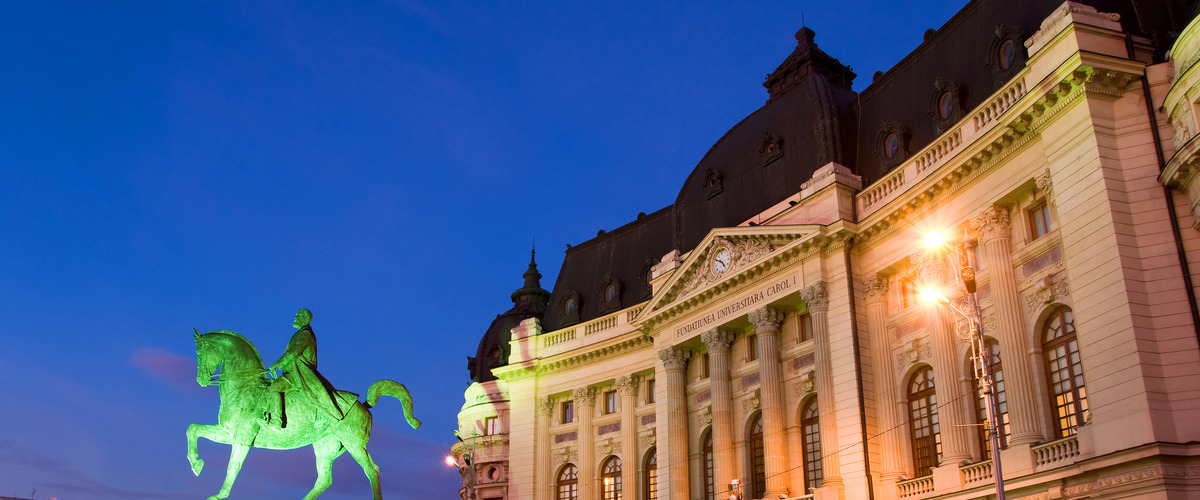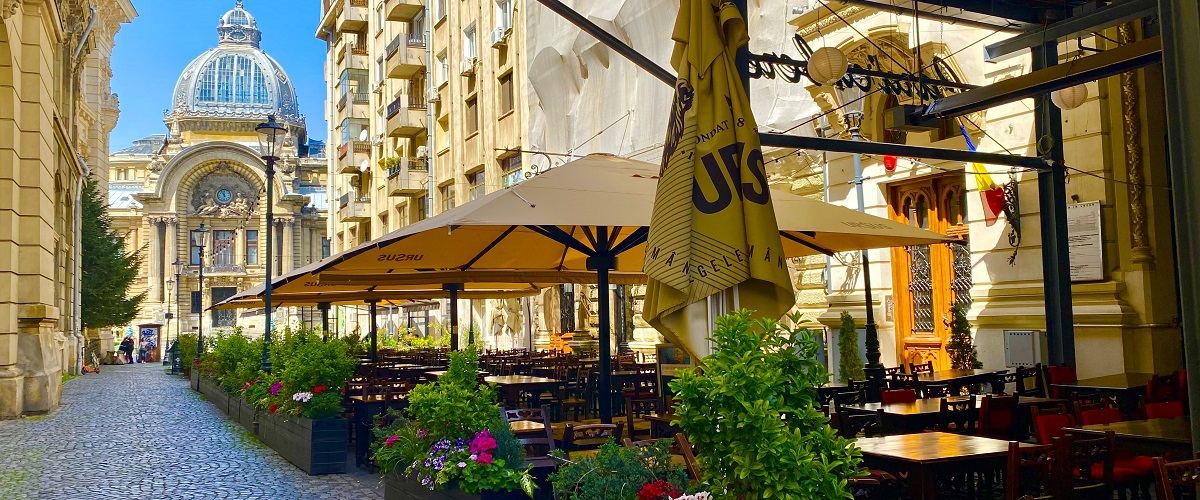Bucharest - "The Little Paris"
Bucharest General Information
Location: Southern Romania
Size: City of Bucharest - 88 sq.miles (228 sq.km); Bucharest Metropolitan area - 587 sq.m(1,521 sq.km)
Elevation: 190-295 ft (55-90 m)
Population: 1.7 milion
Inhabited since: 500 BC
First documented: 1459 AD
Known for its wide, tree-lined boulevards, glorious Belle Époque buildings and a reputation for the high life (which in the 1900s earned its nickname of "Little Paris"), Bucharest, Romania's largest city and capital, is today a bustling metropolis.
A little bit of history
Romanian legend has it that the city of Bucharest was founded on the banks of the Dambovita River by a shepherd named Bucur, whose name literarily means "joy." His flute playing reportedly dazzled the people and his hearty wine from nearby vineyards endeared him to the local traders, who gave his name to the place. Playing the flute, he amazed the people, and his wine from nearby vineyards was very popular among the local traders, who gave his name to the place! And the story lived on, as plenty of people kept coming to this place for the past 500 years, mostly because it was a very good trading spot. After other cities were designated as capital, finally, Bucharest became Romania's capital in the year 1859. Eversince it has been growing and now it is by far our biggest city, also having a large metropolitan area. After becoming capital, Bucharest gained popularity among the bourgeoisie and was filled with elegant landmarks, such as Triumph Arch, Athenaeum Palace, The Royal Palace, The History Museum of Bucharest Municipality. After a flourishing period from the late 1800s to the early 1900s, there has been a completely different era during the communist times. But today, as one of Europe’s most up and coming destinations, Bucharest has had to react quickly to its newfound status. As a result, there are a bevy of recently opened venues to eat, drink, shop, club and sleep, as Bucharest is trying to become more and more modern and attractive.
What to do when you come here
From University Square (Piata Universitatii), most sights of interest are easily accessible, because we could call this place "point 0" of Bucharest, the heart of it, and the nearby Victory Avenue (Calea Victoriei) is a great starting point for strolling and shopping particularly. These two landmarks constitute the central Bucharest area where many of the most well-known restaurants and bars are situated, and where you can find many attractions concentrated together. Walking in this part of the city is the best way to see Bucharest, but don’t be afraid to venture further north, east and west to discover many more treasures. Wander the tree-lined streets, take in some authentic folk art and sample a range of international cuisine.
Whether you want traditional Romania or contemporary city life, come and find it all here. There are plenty of museums, check out:
- The Romanian Village Museum - open air, situated in the beautiful Herastrau Park
- The Romanian Peasant Museum, situated right next to Victory Square
- The National Museum of History, you'll surely get there if you decide to stroll on Victory Avenue
- The National Museum of Art, also seen on Victory Avenue, right to the Revolution Square
Talking about Revolution, you surely heard about our past communist history, and you can visit related spots where you will find out many interesting things, so make sure to check out:
- The Parliament Palace, built near Union Square by dictator Ceausescu after destroying entire neighbourhoods for this megalomanic project (second biggest building in the world after the Pentagon)
- Revolution Square, situated near Victory Avenue, where the important events took place in december 1989
- Ceausescu House, today turned into an actual museum where you can see the exactly how the dictator lived.
If you feel like taking a break, visit one of our beautiful parks: Herastrau, Cismigiu, Kiseleff, or you can even check out Vacaresti - a small delta created by river Dambovita which is inside the city!
If you happen to be inside the Old Town, with cobblestone streets and old merchants' buildings, you will feel a mix of feelings, because the "background" is in old style, but the businesses you will find there, like bars, restaurants and shops, are modern and have big variety. This was, you won't get bored at all! There are plenty of sights to discover:
- The Voivodal Palace, constructed by Vlad The Impaler, which was the ruler's residence since 15th century, but was reconstructed after an earthquake and fire. Today this place is becoming an open-air museum with the help of restoration techniques
- Macca-Villacrosse Passage, a street with an arcaded glass roof, full of restaurants, a great place to rest after a big strolling session
- CEC Palace, one of the most impressive buildings of Bucharest, eclectic style with french architectural elements
- Stavropoleos Church, an 18th century church built inside the city narrow streets which survived the test of time
- The Beer Dray, a very famous restaurant and brewery, in neo-gothic style
The "Henri Coanda" International Airport in Otopeni is relatively close to the city center - half hour drive by car, bus; there is also a train line between the airport and the railway station Gara de Nord. The metro system has 5 lines and serves almost all districts.





.png)



